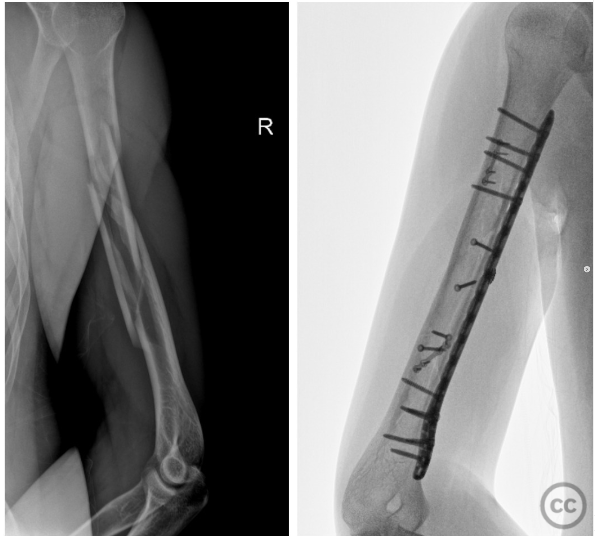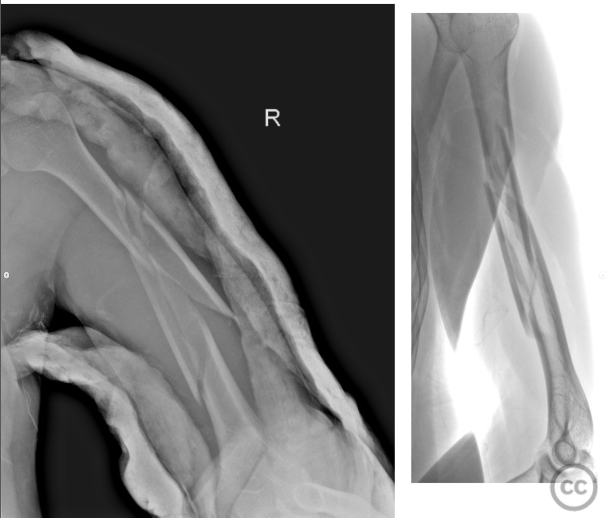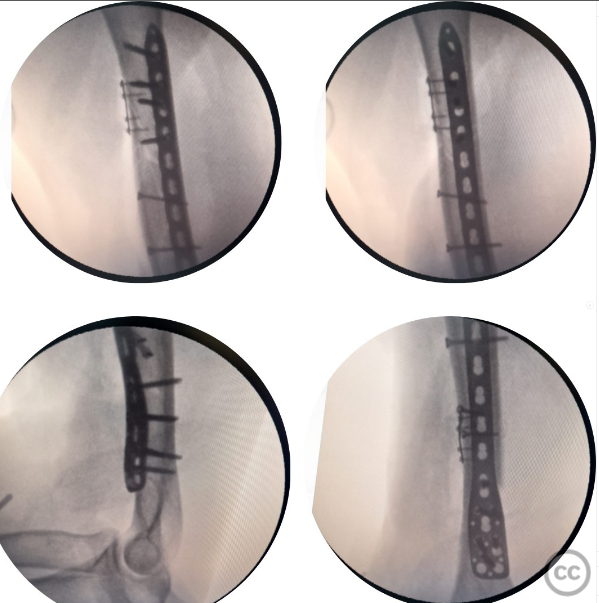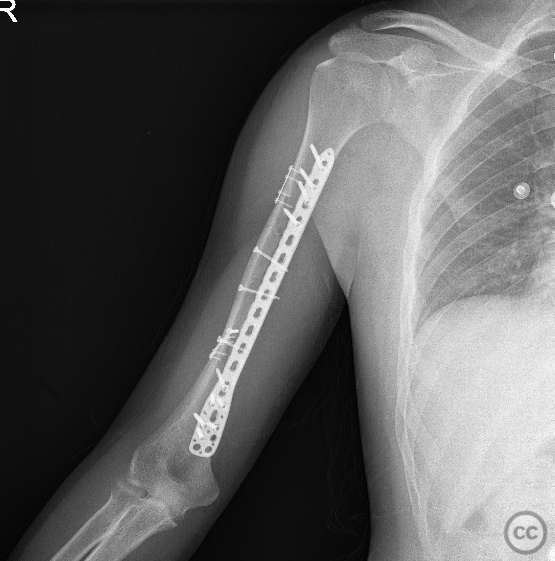Modified Use Of PHILOS Mid/Distal-Third Diaphyseal Humerus Fracture
Score and Comment on this Case
Clinical Details
Clinical and radiological findings: 23-year-old male patient Falling From Height, mid + distal 1/3 Humerus diaphyseal fracture. Dominant side - athletic patient.
Preoperative Plan
Planning remarks:
Surgical Discussion
Patient positioning: Beach-chair
Anatomical surgical approach: Extended Deltopectoral(Anterolateral)
Operative remarks:After incision and radial nerve exploration, large fragments in the middle portion were reduced and fixed with interfragmentary screws. Then, fragment, which had become a single piece in the middle portion, was temporarily fixed with mini plates first to the lower and then to the upper fragment. Finally, fixation was achieved by placing the Philos reverse into the anterior aspect of the humerus.
Author's Resources & References
Search for Related Literature
Industry Sponsership
contact us for advertising opportunities








User Discussion (1)
Guest User
Very creative, and good result. What was the advantage of a PHILOS over just bending a regular LCP to fit?
Safer and more screws distally. In this fracture, perhaps not so much, but in more distal fractures, as we approach the olecranon fossa, the number of screws in the standard plate may be insufficient.